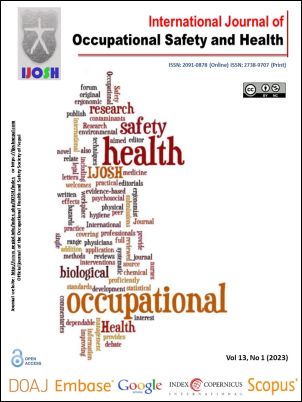Evaluation of Root Cause Analysis from Occupational Health and Safety Data in a Hospital: A Retrospective Study
DOI:
https://doi.org/10.3126/ijosh.v13i1.42418Keywords:
Safety, Accident, Health employee, Root-cause analysisAbstract
Introduction: Occupational accidents are increasing every year around the world. The fact that accidents will be repeated as a result of not learning the lessons is constantly forgotten. Occupational accidents should be examined on the basis of the "Root Cause" approach. Within the scope of the information obtained as a result of the analysis studies on the causes of occupational accidents, it is important for the institutions to make a plan in order to prevent the reoccurrence of the accidents. This study was carried out retrospectively to examine the root cause analysis process of occupational accidents that occurred in a state hospital and to examine how it was applied in the health facility.
Methods: The population of the research consists of occupational accident records that occurred in a state hospital between January 2018 and April 2021. (N=156). In the analysis of the data; Root cause analysis forms and number-percentage distributions were used to identify all factors that could cause a particular problem.
Results: Of those who had occupational accidents, 68.15% were women, 45% were nurses, 25 were cleaning staff and 3% were physicians. Fifty percent of the accidents occurred in inpatient services, 15% in emergency services, and 15% in intensive care units. Causes of accidents; needle-stick injuries (71.8%) are the most common occupational accidents. These injuries are followed by slipping and falling (14.7%).
Conclusion: By establishing a safety culture that monitors occupational accidents at the institutional level, evaluates their consequences and develops precautions, the probability of occupational accidents will decrease. And the costs and compensations that will occur after the accident will decrease, and labor and service/production losses will be prevented.
Downloads
Downloads
Published
How to Cite
Issue
Section
License
Copyright (c) 2023 Mehtap Solmaz, Tugba Solmaz

This work is licensed under a Creative Commons Attribution-NonCommercial 4.0 International License.
This license enables reusers to distribute, remix, adapt, and build upon the material in any medium or format for noncommercial purposes only, and only so long as attribution is given to the creator.





